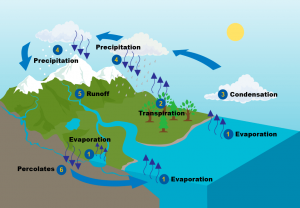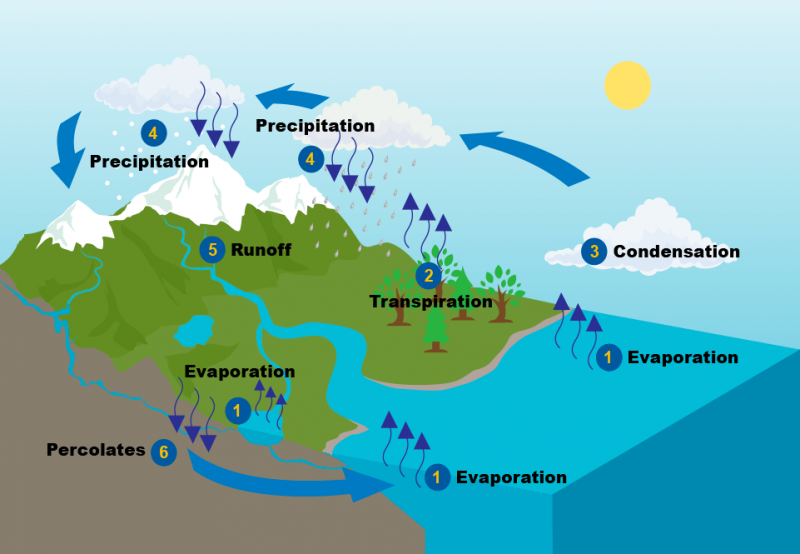The Water Cycle
While mankind has only recently harnessed the power of flowing water to create electricity, water has always flowed from the earth up to the atmosphere and back again in a natural pattern called The Water Cycle (also known as the hydrologic cycle).
Nature is always moving water through the air and land so that the water we use is constantly recycled. That means that all the water molecules on earth and in our atmosphere today are the same ones that existed when the dinosaurs roamed the earth! Here’s how it works:

View the water cycle
- Evaporation—The sun heats water in rivers, lakes and the ocean and turns it into vapor or steam, which then rises into the air.
- Transpiration—Water from plants, animals and humans evaporates into the air.
- Condensation—The vapor cools and turns into tiny water droplets that attach to each other and form clouds.
- Precipitation—Water falls from the clouds as rain, snow, sleet or hail.
- Runoff—Some water stays on the earth’s surface and flows into rivers, lakes and reservoirs.
- Percolation—Other water seeps down into the earth’s natural underground reservoirs called aquifers. Then the cycle begins again, as water from the earth’s surface evaporates into the air.


